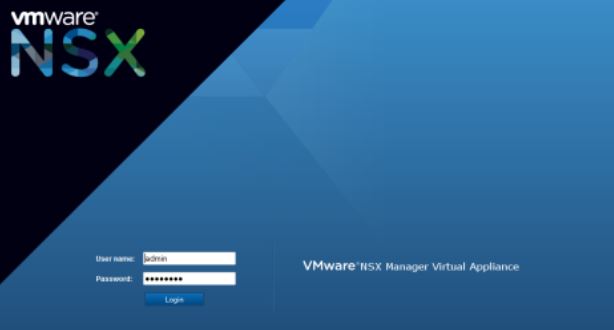NSX 4.1 is a robust network virtualization solution that enables you to create, manage, and secure virtual networks within your VMware vSphere environment.
In this step-by-step guide, we’ll cover the essential tasks required to set up NSX 4.1.

Step 1: Prerequisites
Before diving into the setup process, ensure that you have the following prerequisites in place:
- VMware vSphere Environment with ESXi Hosts: NSX 4.1 integrates with your existing vSphere infrastructure. Make sure you have ESXi hosts deployed and operational.
- NSX Manager Appliance: Deploy the NSX Manager appliance. You can do this through the vSphere Web Client.
- vCenter Server Configuration: NSX Manager relies on vCenter Server for management. Ensure that your vCenter Server is properly configured.
Step 2: Deploy NSX Manager
- Log in to the vSphere Web Client.
- Navigate to Networking & Security > NSX Managers.
- Click the “+” icon to add a new NSX Manager.
- Provide the necessary details (hostname, IP address, etc.) and complete the deployment.
Step 3: Configure NSX Manager
- Log in to the NSX Manager using the provided IP address.
- Follow the setup wizard to configure NSX Manager.
- Connect NSX Manager to vCenter Server.
Step 4: Prepare Hosts
- In the vSphere Web Client, go to Networking & Security > Installation > Host Preparation.
- Click “Install” to prepare the ESXi hosts for NSX.
- Verify that the NSX VIBs (vSphere Installation Bundles) are installed on all hosts.
Step 5: Create Logical Switches
- In the NSX Manager, navigate to Networking & Security > Logical Switches.
- Click “Add” to create a new logical switch.
- Specify the name, transport zone, and other settings for the logical switch.
- Repeat these steps for additional logical switches as needed.
Common Issues When Setting Up NSX 4.1
Setting up VMware NSX 4.1 can be a complex process, and encountering issues is not uncommon. Here are some common challenges you might face during the setup:
NSX Manager Deployment Issues
Prerequisites: Ensure that your vSphere environment, ESXi hosts, and vCenter Server are properly configured before deploying NSX Manager.
NSX Manager Cluster: Setting up an NSX Manager cluster can sometimes be tricky. Verify that the cluster nodes are correctly deployed and connected.
Appliance Proxy Hub: Ensure that the appliance proxy hub on all NSX Manager nodes is connected.
Host Preparation and Transport Nodes
Host Preparation Failures: If host preparation fails, check for issues related to NSX VIBs (vSphere Installation Bundles) installation on ESXi hosts.
Transport Node Profiles: Verify that ESXi hosts are correctly configured as transport nodes using transport node profiles.
Logical Switch Configuration:
Logical Switch Creation: Sometimes, logical switches may not get created or their state remains down. Double-check the configuration and connectivity.
Traffic Performance and Edge VMs:
- NSX Edge VMs: In multi-NSX environments, performance issues related to NSX Edge VMs can occur. Monitor their resource utilization and connectivity.
- Distributed Virtual Switch (DVS): If the DVS is not available for selection in NSX, review the DVS configuration and compatibility.
Documentation and Troubleshooting:
- Official Documentation: Always refer to the official VMware NSX documentation for detailed instructions and best practices.
- Troubleshooting Techniques: Familiarize yourself with troubleshooting methods, such as analyzing logs and checking NSX Controller cluster status.
Remember that each environment is unique, and specific issues may vary. If you encounter any problems, consult the official resources and consider seeking assistance from VMware support or community forums.
Final Word on How to Set Up NSX 4.1
Setting up NSX 4.1 involves several critical steps, from deploying the NSX Manager to configuring logical switches. By following this guide, you’ll be well on your way to creating a robust and secure virtual network environment.
Remember to consult the official NSX documentation for detailed instructions and best practices. Happy networking!
Note: This article provides a basic overview of setting up NSX 4.1. For a more comprehensive guide, refer to the official VMware NSX documentation.






